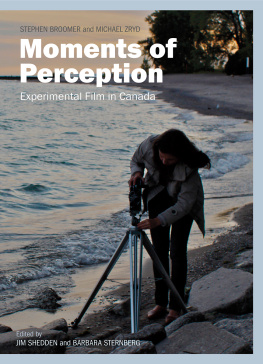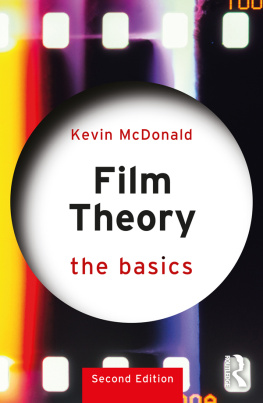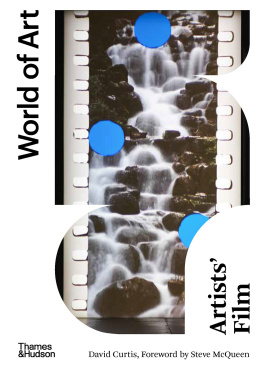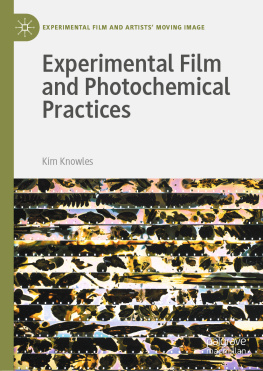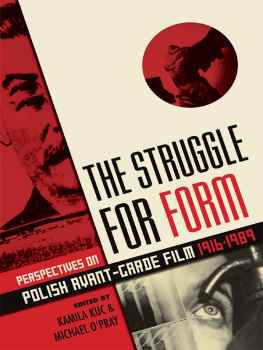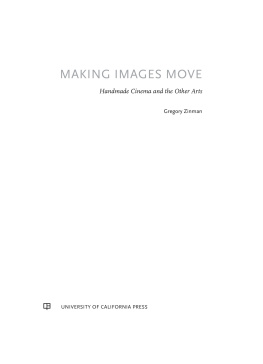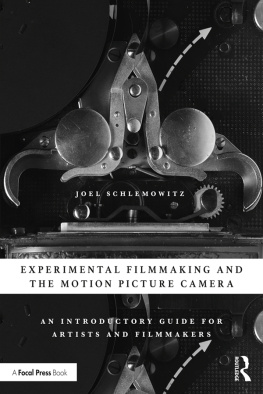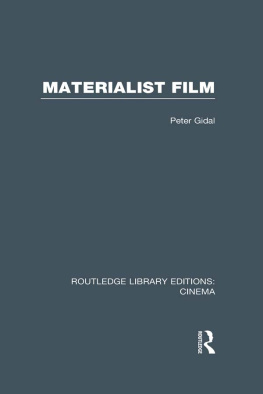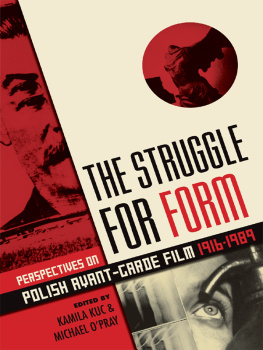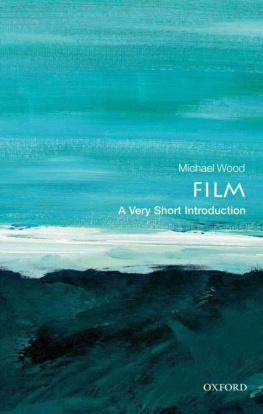Table of Contents
List of Pages
Landmarks

A photograph of a woman bending over a Bolex camera that is mounted on a tripod. She stands on the shoreline of Lake Ontario, which curves away behind her. The sky is a mix of yellows and blues, suggesting that it is dawn or dusk.
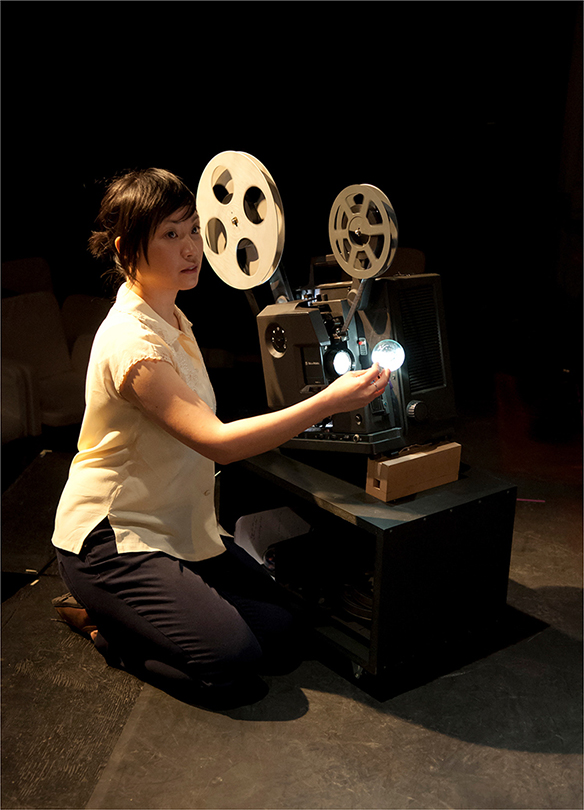
Lesley Loksi Chan, projector performance at Harbourfront Centre, Toronto, 2011 LIsa Narduzzi
A photograph of a woman kneeling and operating a 16mm film projector. She wears a white blouse and dark pants. The photo is from a projector performance at Harbourfront Centre, Toronto, 2011.
Moments of Perception
Experimental Film in Canada
STEPHEN BROOMER and MICHAEL ZRYD
Edited by JIM SHEDDEN and BARBARA STERNBERG
Goose Lane Editions
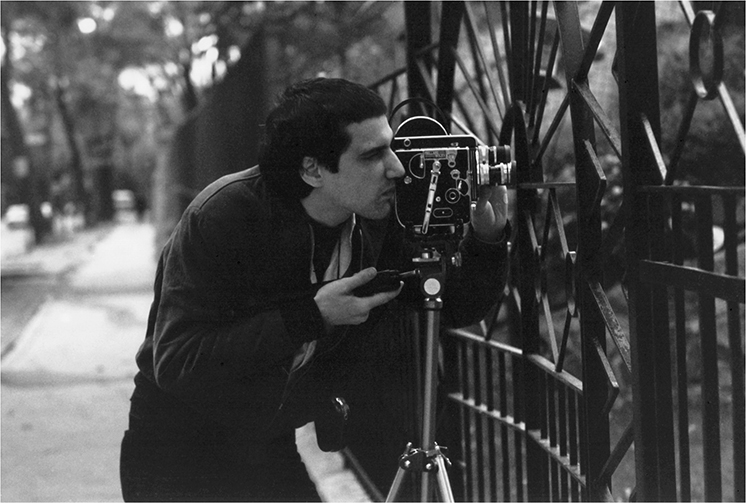
Arthur Lipsett (Judith Sandiford)
A black and white photograph of a man looking through the viewfinder of a 16mm spring-wound Bolex camera. The camera is pointed through a gap in wrought-iron railings. A tree-lined sidewalk stretches blurrily into the background.
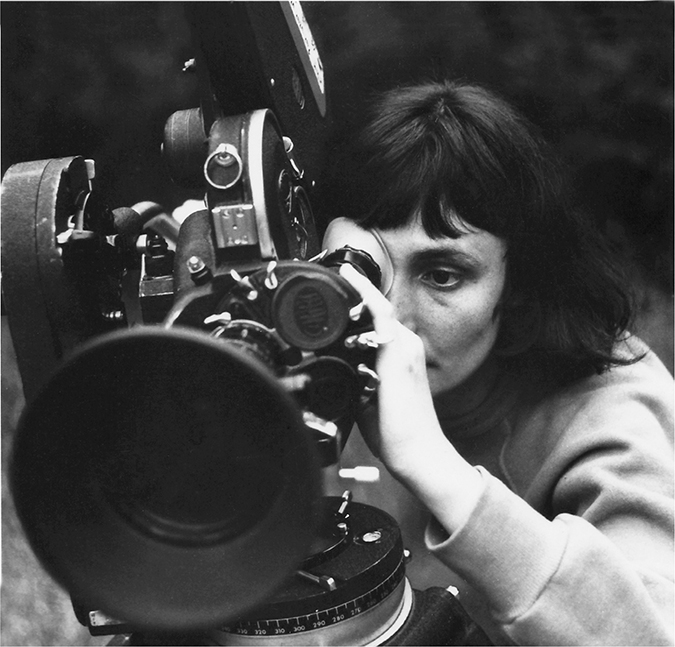
Josephine Massarella (photographer unknown)
A black and white photograph of a woman looking through the viewfinder of an Arriflex camera mounted on a tripod with a 400' magazine and long telephoto lens.
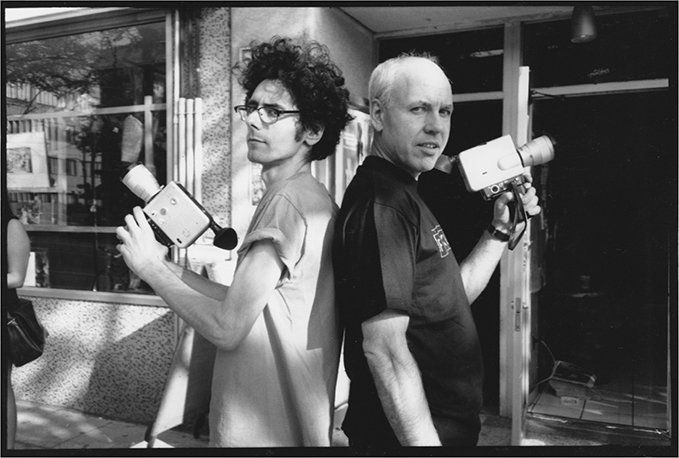
Danny Plotnick and John Porter, 1999 (Norwood Cheek)
A black and white photograph of a younger and older man standing back-to-back while holding Super 8 cameras - as if for a shoot-out. They are outside a storefront.
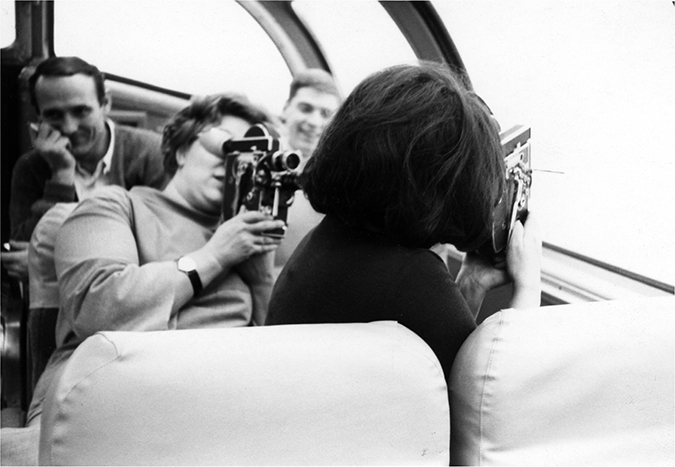
Wendy Michener (left) and Joyce Wieland (right), 1969 (YUL). York University Libraries, Clara Thomas Archives & Special Collections, Joyce Wieland fonds, ASC07123, copyright 1969 by National Gallery of Canada
A black and white photograph taken inside a bubble car on a train. A seated woman points a Bolex camera out the window. Another woman sits opposite her, leaning back and filming the first woman with a Bolex camera. Two men in the seats behind look amused.
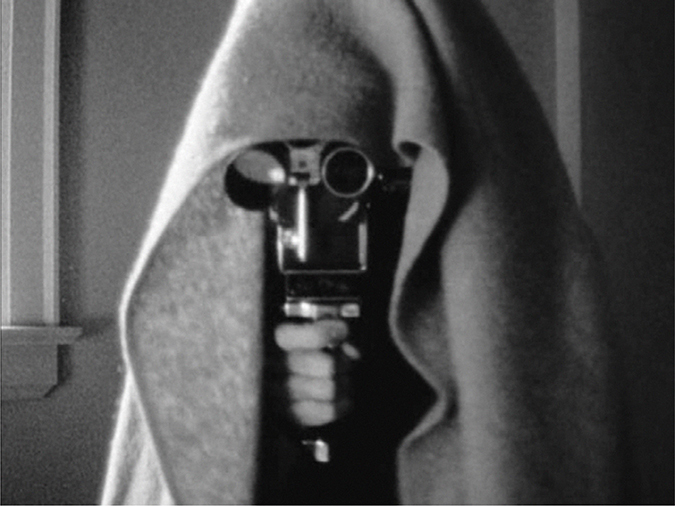
Joyce Wieland and Hollis Frampton, A & B in Ontario, 1967/1984. by Cinmathque Qubcoise
A black and white photograph. A person, Hollis Frampton, covered by a blanket points a Bolex camera directly at the viewer.
INTRODUCTION
Why this book? And why now?
When Im asked what I do, and I say, I make experimental films, the response is invariably, Whats that? This book is an answer to that question. Barbara Sternberg
Experimental film has existed since the beginnings of film. Though critics have identified movements and styles over the years (formal/structural film, materialist, lyrical, autobiographical), it is a richly varied genre, as each film artist explores and defines their own style, technique, themes, subject matter. Experimental film is a hands-on, personal practice. Each film creates its own reality.
The potential of the film medium is unlimited, and experimental filmmakers have been making work in this vast territory ever since the invention of the camera and projector magical, sensual, intellectual, emotive moving image works that have engaged with political, personal, medium-reflexive, and philosophical themes. Throughout the history of film, experimental film (also known as avant-garde, underground, subversive) has been present and active as the definer of film as an art form, as agent provocateur, as personal expression, as innovator.
Experimental film challenges the dominant language of cinema itself and honestly reveals its artifice. In the stylized use of silent movie techniques in Guy Maddins films, and Al Razutiss re-presentation of Lumires Train (Arriving at the Station); in the use of text as image in Kelly Egans work; in the use of special camera mounts and mechanized camera movements in the works of Chris Gallagher, Richard Kerr, and Alexandre Larose, which serve to confound what is filmed and what we see on the screen; in the near abstraction of the image through hand-processing and optical printing in Carl Browns and Louise Bourques films, revealing the material basis of films emulsion in these and many more ways, experimental film points to the illusion and illusory nature inherent in film.
Although this artisanal form of filmmaking is as old as film itself, it has not had the visibility and popular exposure that mainstream industry filmmaking has had; it continues to reach small committed audiences in small underground venues. Its impact, however, is visible in the work of visual artists and the commercial media world.
From surrealism through abstraction, to minimalist and feminist movements, and beyond, the visual and film arts have had parallel developments. Often the practitioners of one were also working in the other: Dal, Lger, Richter, Serra, Snow, Wieland, Chambers. In contemporary practice, the line between visual and media arts is constantly being traversed, with gallery installations involving film by visual artists (Stan Douglas, for example), and performative screenings by filmmakers. John Porter and Alex MacKenzie use altered projectors in live performances of film; Christina Battles work is shown almost exclusively in galleries.
Experimental film is international; practices cut across national boundaries. Canadian filmmakers are known and their work is shown to acclaim in Britain, France, Germany, Indonesia, Spain, Turkey, and the USA, among other countries. Canadian experimental film now has a long and well-reputed history. Its story needs to be told, but no book has done so until now.
Moments of Perception: Experimental Film in Canada is a multi-authored book mapping the history of artist (avant-garde/experimental) filmmaking in Canada from the mid-1950s to the present. Moments of Perception is designed to provide an overview of artists film as an expression of Canadian culture including all the contradictions and complexities of that term by understanding how artists have taken up the moving image as a form of artistic expression over the last seven decades.
The book is divided into three sections. Section 1 gives a broad overview of the terrain the institutional and individual players whose presence and support (or lack thereof) helped shape the field, the main directions and many side paths and loops taken. Written by Michael Zryd, who teaches cinema and media arts, it considers how institutions like the National Film Board (NFB), film schools, the Canada Council, and independent groups like the Funnel, Canadian Filmmakers Distribution Centre (CFMDC), and the Winnipeg Film Group (WFG) shaped how artists worked and audiences accessed this work. Who have been some of the key movers and shakers creating the scene? For whatever the specific mandate of an institution, and whether from within an institution or without, it is individuals with their particular interests and passions who make things happen. How have artists and distributors and exhibitors navigated periods of economic excess (e.g., the 1960s) or scarcity (e.g., the 1980s)? How have artists been part of social movements like feminism, multiculturalism, LGBTQ2+, and Indigenous protest, and how have audiences changed as Canada has grown and matured over the last half-century? Changes in technology have given artists new tools (e.g., the digital revolution) and restrictions (e.g., the so-called death of film) that have shaped how artists have explored the landscapes (urban and natural), cultures, and themes of their work. The backbone of

